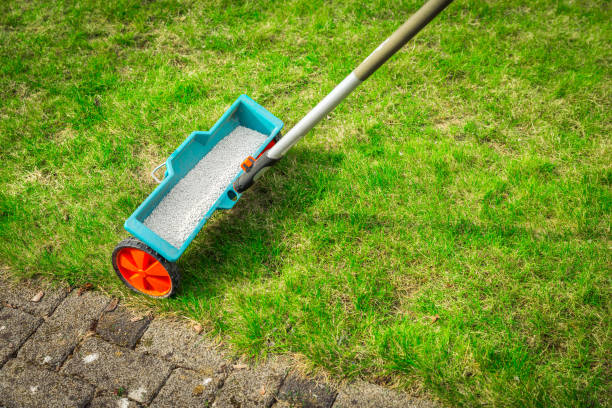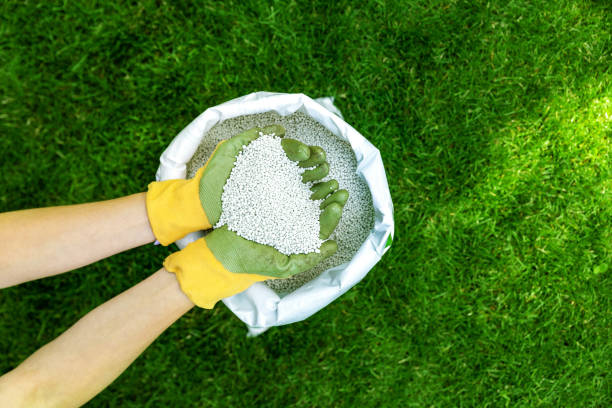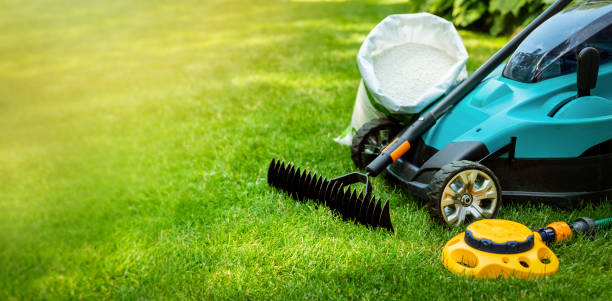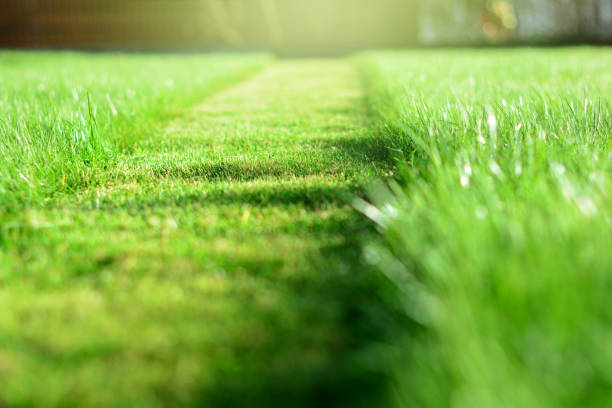Tips for lawn care and lawn fertilization – ecological, cheap, and effective. Remove molehills, mow properly and fertilize correctly: This is how you get your lawn off to a good start in the warm season.
The first really warm rays of spring are appearing. It’s high time to take care of the lawn in the garden, which has been badly damaged by the winter. Proper preparation and care of the lawn in spring guarantees healthy and even growth of the lawn. In order to keep the lawn healthy and strong in the long term, certain things must be observed when mowing, raking, and fertilizing.
Prepare the lawn properly

Before you can start the actual lawn care, you have to free the lawn from remaining leaves, weeds, branches, and moss. So thoroughly rake the entire lawn. Especially under many branches and foliage, damp spots are increasingly forming, which should later be drained when mowing.
Here you could come across moss that interferes with mowing. Remove the moss if possible, otherwise, the moss plants can crowd out the lawn plants over a longer period of time. You may need to use a scarifier to remove the moss plants from the soil. Other (dead) plant parts are also removed. No new moss can then grow at this point.
Remove Molehills
It also happens that you encounter a previously hidden molehill. If it bothers you, first remove the visible part of the mound. Then you can close the entrance with the remaining material. It is best to tread down the loose soil a little afterward, otherwise, it can be washed away quickly in the next downpour.
Lawn mowing and lawn care
All disturbing remnants of autumn and winter removed? Then you can start mowing. The first time between March and April is ideal. If it was a particularly mild winter, you can also mow the grass for the first time before these months. Feel free to mow a few inches (3-6 cm) away from the first layer of grass.
Scarify and prevent weed infestation
Similar to mowing the lawn for the first time, you should start scarifying as early as March. The blades of the scarifier may only penetrate a few millimeters into the ground, otherwise, they destroy the lawn too much and you want to take care of your lawn. At the possibly bare spots, you sow here, and only here for the time being. Remember to give the new lawn a good watering afterward.
So that the entire lawn area remains free of weeds and moss for the next year, we recommend liming the lawn. Lime is basic, while weeds and moss prefer acidic soil. This will prevent a further infestation with weeds and moss. In addition, you regulate the pH value of the soil. Before you start fertilizing, the lawn should rest and aerate for a few days.
The use of lawn fertilizer
Now that the lawn has been adequately cared for and aerated, it is time to fertilize the lawn extensively. The lawn, which has been strained after the winter and mowing, now needs all kinds of nutrients in order to recover. Make sure that the lime has completely seeped into the ground. You can then fertilize the entire lawn. You should spread the lawn fertilizer evenly over the area. If you are experienced, you can spread the fertilizer freely by hand. If you still have trouble distributing the fertilizer pellets evenly, you should use a fertilizer spreader.
Alternatively, you can of course use your own finely ground compost if you don’t want to buy and use industrial fertilizer. You will also find the very best home remedies for plant and flower fertilizers as well as for instructions on how to make potting soil yourself on our website.

The right time to fertilize the lawn
Prefer overcast days when it is already obvious that it will rain soon. When it rains soon, the fertilizer nutrients are transported into the soil and can be quickly absorbed by the lawn. Fertilizing in sunny weather is not recommended.
After fertilization, the lawn should be protected. Another raking, raking, or scarifying immediately afterward will only damage the lawn. Wait 1-2 weeks after fertilizing to rake or scarify the lawn again. Otherwise, it can lead to complications in the growth of the lawn. The fertilizer activates growth hormones and the metabolism of the plant. Disrupting this process is therefore not recommended. If you pay attention to this, you will soon have a perfectly manicured, beautiful lawn again!


